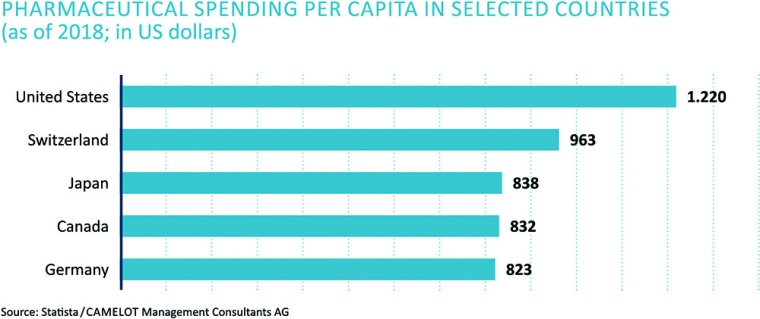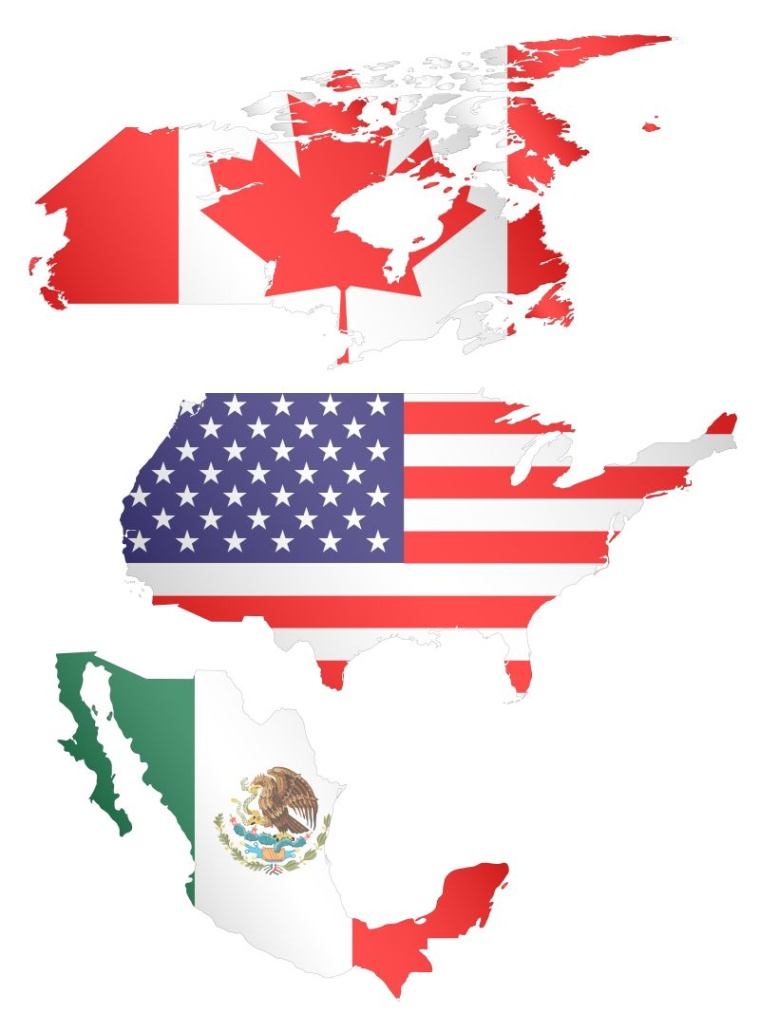Pharmaceutical Logistics in North America




Pharmaceutical logistics in North America is more dynamic now than ever. Logistics executives are addressing increases in special handling requirements along with heightened cost pressures with innovative approaches to logistics management. And pharmaceutical logistics in the United States is big business. With slightly less than 330 million people, the United States represents less than 5% of the total world population, but, depending on the statistics referenced, the United States comprises over one third of the total global spend on pharmaceuticals.
The $1,200 per year per capita spend on pharmaceutical products in the US is about 30% more than the next highest per capita spender, Switzerland, and about twice as much as Italy and France (Statista). As a result, regulators and healthcare advocates are taking notice.
The Politics
The US government continues to debate instituting pharmaceutical price controls like those used by other countries but, so far, no new bills have been passed regarding pricing reform. The current administration has recommended approaches to allow Americans to legally and safely gain access to lower priced medicines from abroad but those approaches continue to meet resistance.
All in all, Americans continue to struggle with paying the highest prices in the world for the pharmaceutical products they need. No matter what the perspective is, the fact remains that the North American pharmaceutical market is the largest in the world with the United States leading the way.
The Scale
The structure of pharmaceutical distribution in North America is driven by the different geographic and population density profiles of the three major North American countries — the United States, Canada and Mexico. While North America technically includes 23 sovereign Nations, the US, Canada and Mexico dwarf all other countries by both population and land area, accounting for over 80% of the North American population. (Note: For this discussion, while geographically part of the North American tectonic plate, Greenland is considered within the European continent)
Canada is one of the least densely populated countries in the world. Even though the population is small, only the US and Switzerland spend more per capita on pharmaceutical products than Canada. Mexico, approaching 130 million people, falls just outside the 10 most populous countries in the world but spends very little on pharmaceuticals, less than a quarter of what the US or Canada spends.
If the pricing scenario stays the same in the United States, Canada and Mexico, the volume of pharmaceutical sales will likely continue to expand based on population growth and the aging populations in those countries. To the North American pharmaceutical logistics professional shifts in channel operations and product flows are of more importance than the macroeconomic effects driven by political agendas.
The Distribution Structure
Canada and Mexico combined represent less than 15% of the volume and spend of pharmaceutical products in North America. Most of the activity regarding North American pharmaceutical distribution revolves around the United States. Over the last 20 years,
mergers and acquisitions have been commonplace across the pharmaceutical supply chain. Pharmaceutical manufacturers, wholesalers, retailers and hospital systems have all consolidated, eliminating operational redundancies and driving economies of scale.
“The North American pharmaceutical
market is the largest in the world.”
No matter what the size of the pharmaceutical manufacturer, nearly
all pharmaceuticals are distributed through one of three major wholesale distributors — McKesson, Cardinal Health and AmerisourceBergen. These three behemoths not only dominate the pharmaceutical industry in the US, they are all within the largest 20 of all companies in the country. McKesson, for example, ranks 7th on the Fortune 500 list, 30 spots higherthan the largest diversified pharmaceutical manufacturer who ranks 37th on the list. These three all have immense distribution networks with dozens of warehouses and specialty facilities scattered throughout the country to accommodate nearly every pharmaceutical distribution need and to facilitate next day (or better) delivery for the majority of their customers. In total, these three companies control well over 90% of the pharmaceutical distribution market in the United States.
Similarly, the large pharmaceutical retailers continue to consolidate. Twenty years ago, there were dozens of regional pharmacy chains in the United States and many mass merchants, grocers and independent pharmacies existed. Today there are essentially two pharmaceutical focused retailers — CVS and Walgreens. In 2018, the Walgreen’s Boots Alliance, owner of the Walgreen’s chain in the US, completed the acquisition of the third largest pharmaceutical retailer, Rite Aid. Even so, Walgreen’s remains 2nd behind CVS which controls almost a quarter of the retail pharmaceutical prescription market in the United States. The other larger retail pharmaceutical channels include the remaining large mass merchants, grocers, mail-order pharmacies and hospital systems, all of which have been consolidating as well. In 2016, CVS took over the pharmaceutical retail activity within Target, the 2nd largest US mass merchant behind Walmart. Overall, more than 70% of pharmaceutical retail is controlled by just 10 companies.
Shifting Handling Requirements
Specialty handling requirements for pharmaceutical products is becoming less and less “special”. Gone are the days when simple tableted or capsuled products dominated pharmacy shelves waiting to be counted out by pharmacists, hopefully well ahead of the years long expiration dates printed on their bottles. The growth in biologics has driven the need for more and more temperature-controlled capacity and much more sophisticated temperature monitoring. Shelf lives are becoming dramatically shorter and “designer” drugs are being made for specific individuals. The increasing complexity of pharmaceutical product characteristics is no different in North America than it is in other parts of the world. To some extent, the large population and high use of new products with specialty handling requirements leads to some economies of scale, especially considering the geographic expanse of the continent and related climate diversity.
Shifting Regulatory Requirements
A major initiative underway in the United States relates to the tracking and tracing of pharmaceutical products driven the Drug Supply Chain Security Act (DSCSA) which was made law in 2013. These new regulations had a 10-year implementation timeline involving licensure, product verification, serialization and traceability. Companies across the supply chain have been working to comply with the regulations which require “lot level” traceability all the way through the dispensing pharmacy by the end of 2020. By 2023, the pharmaceutical supply chain is charged to operate with an inter-operable system at the unit level. Companies have been able to comply with the regulations to date for the most part as requirements have focused on lot level traceability through the distributors.
2020: a Defining Year for Cannabis
In 2018, Canada nationally legalized medical and recreational cannabis. In the United States over 30 states have legalized cannabis either completely or with various restrictions even though national/federal restrictions still exist. The layers to cannabis legalization are complex as state restrictions for growing, distributing and selling cannabis products vary. Federal restrictions generally prohibit the shipment of cannabis products across state lines and federal banking laws dramatically limit funding and investment options for companies operating within the cannabis supply chain.
The momentum for further legalization at the federal level, however, is clearly building. Hemp was previously classified as a controlled substance under the umbrella of all cannabis products in the Controlled Substance Act of 1970. The new legislation dictates that hemp cannot contain more than 0.3% THC, the psychoactive chemical within cannabis products. Federally, any cannabis product with more than 0.3% THC is still deemed a controlled substance. The new law generates and protects research regarding hemp-based products.
From an operational perspective, changes to logistics systems due to cannabis-based products could be far reaching in the future. Potential effects range from cannibalization of existing over the counter and prescription medicines to completely new treatments based on the 500 or so unique chemical compounds that exist within cannabis plants.
“’Lot level’ traceability all the way through the dispensing
pharmacy is required by the end of 2020.”
An Ever-changing Environment
Just 25 years ago, logistics in the pharmaceutical arena in North America was relatively straight forward. Products were dominated by chemically produced, stable small molecule compounds requiring limited attention beyond security and expiration date management. Logistics costs were relatively insignificant, usually much less than 1% of the sales cost, and products had longer shelf lives so distribution channels were flush with inventory and leveraged basic warehousing, transportation and handling processes.
Today, pharmaceutical logistics in North America is dramatically different and changing at an unprecedented pace based on a plethora of influences. The foreseeable future for pharmaceutical logistics in North America is expected to remain dynamic, challenging and loaded with procedural, technological and operational innovations as logistics processes and structures adapt to growth and dramatically increased complexity.





